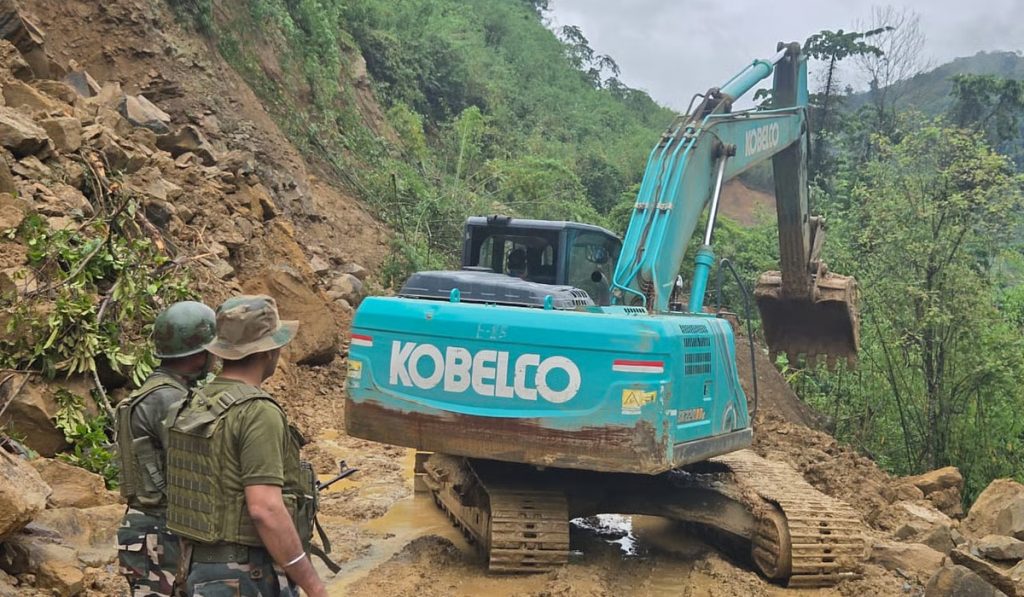In Manipur, the earth suffers in silence— first scarred by ethnic barricades and bunkers, then battered by floods that care little for maps or identities. As Cyclone Remal swept across the state, landslides buried hill districts like Pherzawl and Noney, while hospitals in the Imphal Valley scrambled to save newborns from rising waters.
For a moment, nature dissolved the boundaries conflict had drawn. Yet even in shared disaster, Manipur remains fractured. For over two years, the state has been gripped by conflict between Meitei and Kuki-Zomi communities. But as battles for land intensify, the land itself is deteriorating. Flash floods, soil erosion, blocked rivers and landslides have made Manipur not just a political battleground, but an ecological one.
Ironically, those fighting to control the land often neglect to care for it. In May and June of 2024 and 2025, relentless rains inundated Imphal and collapsed hillsides in Ukhrul and Churachandpur. The critical Imphal-Jiribam highway was cut off. At least 19,811 people were affected, 1,600 relocated, and damage was reported to thousands of homes and key infrastructure. The root causes were not just meteorological. Wetlands like Lamphelpat, once buffers against floods, have been encroached upon.
Rivers like the Nambul are clogged with plastic. In the hills, unchecked mining and deforestation destabilise slopes, increasing disaster risk. I m p h a l ’s o u t d a t e d drainage system can no longer support its swelling population. Meanwhile, hill districts suffer from neglected infrastructure. Development here follows ethnic lines, not ecological logic. In such a fractured polity, land is governed in fragments, not as a shared whole. Despite multiple orders from the National Green Tribunal and expert calls for afforestation, hill zoning and watershed-based planning, little has changed. A 2022 order penalised Manipur with Rs 200 crore in environmental compensation, but implementation remains absent.
In June 2025, under President’s Rule, Manipur sought Rs 1,000 crore in assistance from the Centre— but prioritised pensions and security. There was little mention of flood management or wetland restoration. Even displacement, which has affected nearly 25,000 people, was overlooked. Manipur is one of India’s most ecologically rich states, yet one of the worst managed. Conflicts over identity have pushed ecological governance to the margins.
Relief efforts, too, are often divided along community lines. Despite moments of shared struggle—cleanups, rescues, meals—solidarity remains fragile. The state must now choose between collapse and cooperation. Its hills and valleys are ecologically interdependent.
Runoff from deforested hills floods the plains. Resilience will require a new vision of federalism— one rooted in watersheds, not just identity. Shared institutions, flood-sensitive cities, regulated mining, and community-led planning must be at the core of rebuilding. If the people of Manipur do not come together to protect the land, the land will continue to turn against them.
